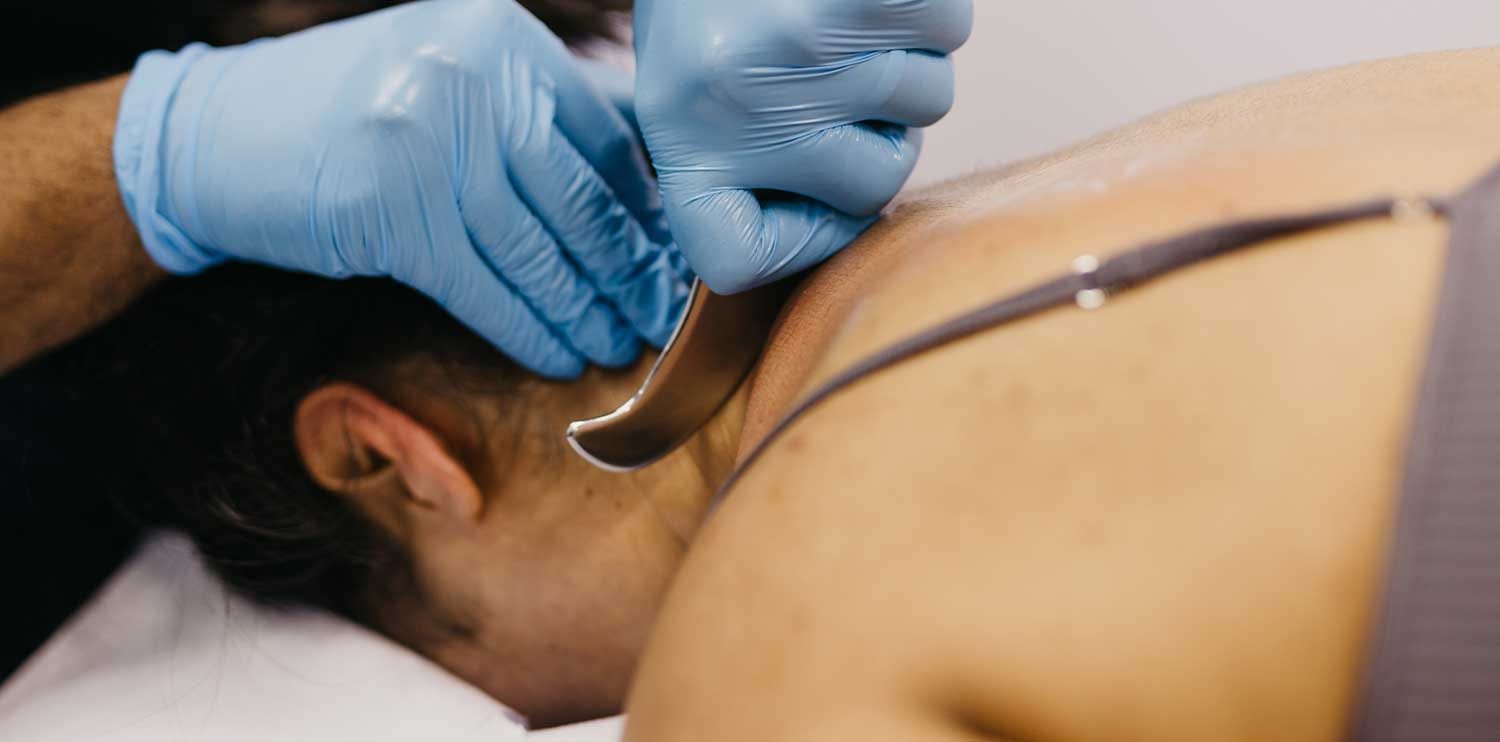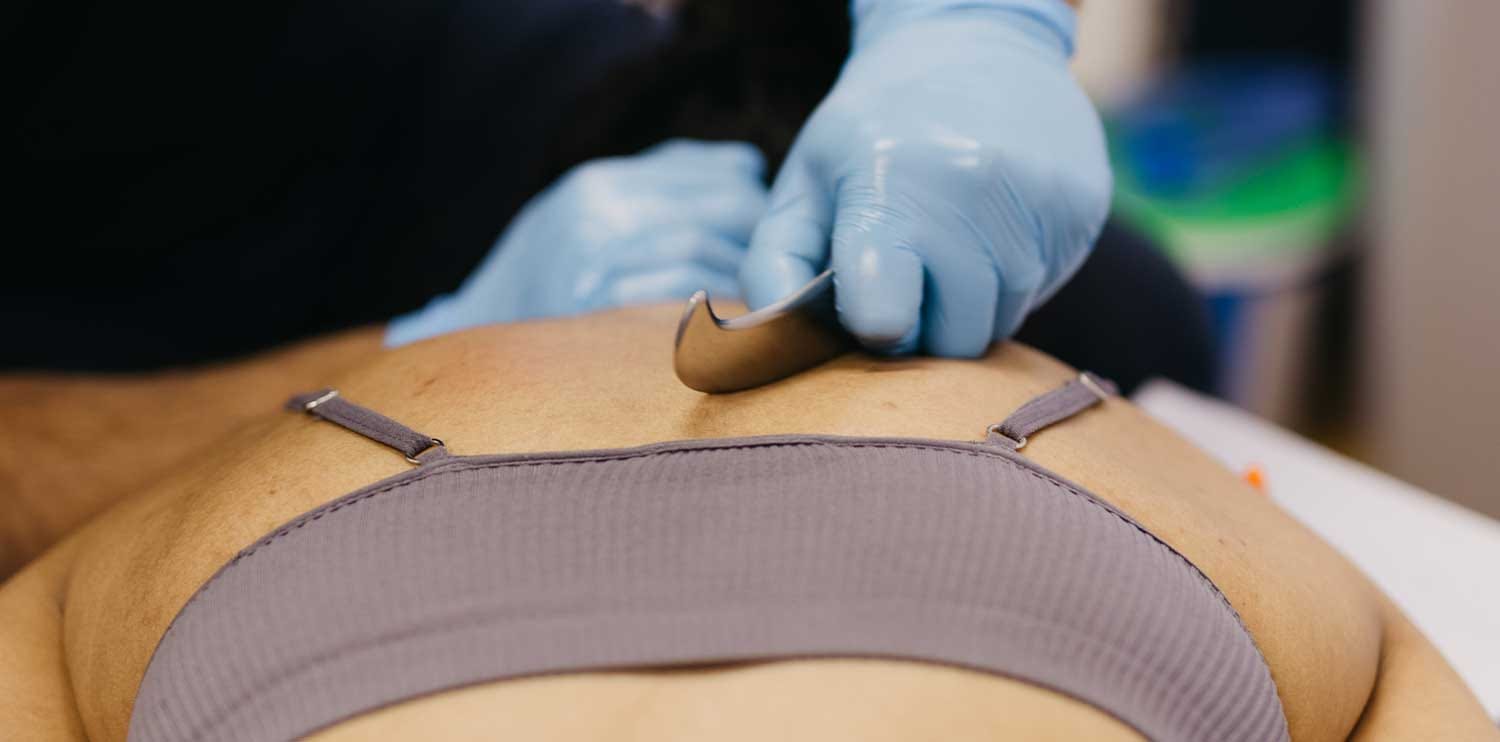Discover the top 7 benefits of IASTM soft tissue mobilisation therapy for chronic back pain, neck pain & sports injuries—long-term relief from GOsC-registered osteopaths.

Chronic musculoskeletal pain affects millions across the UK, often disrupting daily life and reducing overall well-being. In recent years, instrument-assisted soft tissue mobilisation (IASTM) has gained prominence as a practical manual therapy technique. By combining specialised stainless-steel tools with the principles of osteopathy, physiotherapy and chiropractic, IASTM offers a unique approach to addressing soft tissue restrictions and promoting long-term pain relief. In this article, we’ll explore the benefits of soft tissue mobilisation therapy, focusing on seven key advantages, the conditions it treats, and how MHV Clinic’s GOsC-registered osteopaths deliver sustainable results.
Instrument-assisted soft tissue mobilisation (IASTM) is a manual therapy technique that employs ergonomically designed stainless-steel tools to apply targeted pressure and shear forces across the skin, muscles and fascia. Originating from James Cyriax’s cross-friction massage principles, IASTM aims to detect and treat soft tissue dysfunction more precisely than hands-on techniques. Unlike traditional massage, these instruments enable practitioners to apply consistent force, thereby improving tactile feedback and facilitating the identification of fascial adhesions or “gristles” beneath the surface. pmc.ncbi.nlm.nih.gov
Furthermore, IASTM is supported by growing clinical evidence. A recent BMC Musculoskeletal Disorders systematic review (2025) found moderate-certainty evidence that IASTM significantly reduces patient-reported pain (SMD 0.60, 95% CI: 0.41–0.80) and low-certainty evidence for improving function in musculoskeletal disorders bmcmusculoskeletdisord.biomedcentral.com. Consequently, this modality is now widely used by osteopaths, physiotherapists and chiropractors across the UK.
IASTM triggers a cascade of physiological responses designed to accelerate the body’s natural healing processes. When the instrument glides over the issue:
Ultimately, these mechanisms facilitate improved circulation, reduced pain sensitivity and enhanced range of motion, laying the groundwork for long-term recovery.

By mechanically stimulating soft tissues, IASTM desensitises nociceptors and interrupts pain-spasm cycles. A PMCID review highlights that IASTM groups experienced medium to significant pain reductions (effect sizes: 0.48–2.08) within 8 weeks of treatment (pmc.ncbi.nlm.nih.gov). Consequently, patients often report immediate relief, making daily activities more manageable.
Adhesions and fascial restrictions can severely limit joint mobility. IASTM’s shear forces help realign collagen fibres and stretch shortened tissue. A meta-analysis demonstrated significant improvements in ROM (MD 4.94°; 95% CI: 3.29–6.60) in both healthy individuals with deficits and patients with musculoskeletal disorders bmcmusculoskeletdisord.biomedcentral.com.
Old injuries or surgeries often leave behind fibrotic tissue that hinders flexibility and mobility. IASTM tools detect these nodules and facilitate their breakdown through precise, focused pressure. Over time, this remodelling restores standard tissue architecture and function, reducing the frequency of recurrent pain episodes.
The controlled microtrauma induced by IASTM increases local blood flow and lymphatic drainage. Enhanced circulation not only accelerates nutrient delivery and waste removal but also optimises tissue hydration, which is critical for maintaining pliable, healthy fascia.
Minor sports injuries—such as muscle strains, tendonitis and ligament sprains—require efficient rehabilitation to prevent chronic issues. By promoting rapid tissue remodelling and reducing pain, IASTM can shorten downtime and support a safe return to sports. chiropractic-uk.co.uk
At MHV Clinic, IASTM is integrated into comprehensive care plans alongside exercise therapy, ergonomic advice and self-management strategies. This personalised approach addresses not only the symptoms but also the underlying biomechanical imbalances, ensuring sustainable outcomes.
Unlike passive modalities that offer short-lived effects, IASTM stimulates lasting physiological changes. By coupling fascial remodelling with strengthening exercises and posture correction, patients develop resilience against future flare-ups, achieving enduring relief.

IASTM is a versatile and evidence-based treatment option for a range of musculoskeletal issues. Osteopaths regulated by the General Osteopathic Council (GOsC) may claim to treat conditions supported by robust clinical evidence, including:
Moreover, NHS guidance recommends manual therapy, such as soft tissue mobilisation, as a key component of physiotherapy for back pain management (nhs.uk), and the Chartered Society of Physiotherapy recognises its role in chronic pain care (csp.org.uk).
At MHV Clinic, our team comprises GOsC-registered osteopaths ensuring a collaborative, multi-disciplinary environment. Our process includes:
By adhering to ASA/CAP guidelines, we ensure all claims are evidence-based, professionally presented and within the scope of osteopathic practice asa.org.uk. Additionally, we collaborate with local GPs, sports medicine specialists and nutritionists to provide holistic care, making MHV Clinic a centre of excellence for chronic pain management.
Instrument-assisted soft tissue mobilisation offers a robust, evidence-backed approach to managing chronic pain, improving mobility and accelerating recovery from sports injuries. By utilising IASTM, patients benefit from targeted fascial remodelling, enhanced circulation and long-lasting relief. At MHV Clinic, our integrated osteopathic services ensure each individual receives a personalised pathway to optimal health.
If you’re struggling with back pain, neck pain or sports-related discomfort, book your consultation today and discover the transformative benefits of IASTM.
Disclaimer: Treatment outcomes vary for each individual. For conditions outside the approved osteopathic scope or red-flag symptoms, please seek medical supervision.